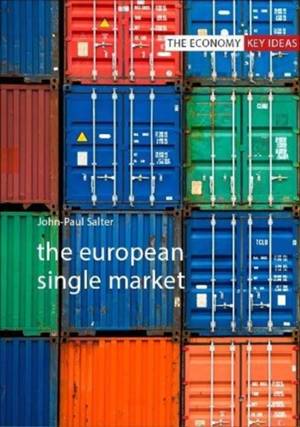
- Afhalen na 1 uur in een winkel met voorraad
- Gratis thuislevering in België vanaf € 30
- Ruim aanbod met 7 miljoen producten
- Afhalen na 1 uur in een winkel met voorraad
- Gratis thuislevering in België vanaf € 30
- Ruim aanbod met 7 miljoen producten
Zoeken
€ 20,95
+ 41 punten
Uitvoering
Omschrijving
The European Union's economic system is made up of several interconnected parts, including a single currency, mechanisms for fiscal coordination, and an integrated financial system. Crucial to all of these elements is the single market: the vast trading area within and around which goods, people, services, and capital move freely. Despite the centrality of the single market to the European project, it is a relatively recent achievement and also one around which there is considerable confusion and misunderstanding. This short book aims to illuminate the concept and critically examine its crucial role in the EU and beyond. The book first examines the theory underpinning the idea of a single market, and free trade in general, before exploring in depth the development of the European concept, how it works, what is traded (and what is not), and how rules are enforced. Throughout, Salter shows how the European Single Market is tightly bound with other areas of EU policy and can only be understood within a broader EU social, macroeconomic, and public policy framework. Although the EU's single market is a remarkable achievement that brings together member states in a trading system with few internal barriers and restrictions, paradoxically, Salter shows, its internal freedom has been marked by external protectionism. Indeed, negotiating deals with external trading partners has proved tricky (notably TTIP and CETA). As the UK grapples with what form its Brexit shall take, this clear and balanced analysis of the single market will be welcome reading.
Specificaties
Betrokkenen
- Auteur(s):
- Uitgeverij:
Inhoud
- Aantal bladzijden:
- 176
- Taal:
- Engels
- Reeks:
Eigenschappen
- Productcode (EAN):
- 9781788210669
- Verschijningsdatum:
- 20/06/2020
- Uitvoering:
- Paperback
- Formaat:
- Trade paperback (VS)
- Afmetingen:
- 140 mm x 203 mm

Alleen bij Standaard Boekhandel
+ 41 punten op je klantenkaart van Standaard Boekhandel
Beoordelingen
We publiceren alleen reviews die voldoen aan de voorwaarden voor reviews. Bekijk onze voorwaarden voor reviews.











